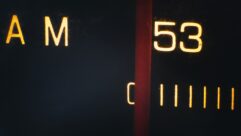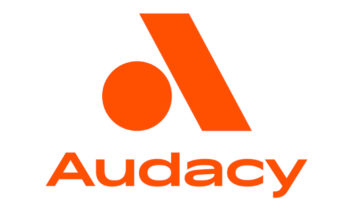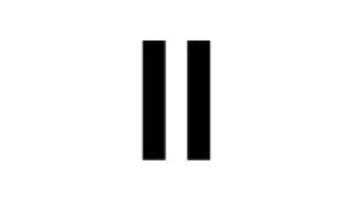COLUMBIA, Md. When Ibiquity Digital Corp. recently moved to the other side of I-95 and closer to the Baltimore/Washington International Thurgood Marshall Airport, it leased most of a floor in a larger building than it had occupied previously.
Now on Columbia Gateway Drive, close to one of Arbitron’s three buildings in the area, Ibiquity has gained more space — particularly for its lab. Ibiquity’s lab employees, currently at eight technical personnel and growing, conduct end-to-end testing of the IBOC transmission and receive systems, as well as quality control tests.
The lab group is busy testing smaller, more power-efficient chipsets for smaller IBOC devices, preparing for the technology to be included in portables and small digital devices next year. Employees also make test equipment for HD Radio receiver manufacturers.
Overall, the lab, under the direction of Randall Richter, director of the Test Commercial Applications Group, has morphed from a facility that focused on development of the IBOC system to the new lab, to one that focuses on quality control and the commercial application and testing of the IBOC system, as well as furthering the evolution of HD Radio technology.
The lab personnel in Columbia work closely with the company’s software development personnel in Basking Ridge, N.J. The company also has test personnel in New Jersey and Detroit, said Richter.
The receiver side
A big part of the lab tests at the moment concerns certification of HD Radio receivers and receiver modules. Ibiquity has licensed two test facilities near its receiver manufacturing partners: Toko in Japan and Intertek in Hong Kong. “People that have to take their radios in to be UL- and FCC-certified can also go in there and be HD-certified,” said Richter, in a lab tour exclusive to Radio World.
Intertek is especially convenient for the receiver makers based in China; some of them were having trouble getting out of the country to come to the U.S., but they have no trouble getting into Hong Kong, noted Richter and Jeff Detweiler, director of Broadcast Business Development.
According to the Intertek Web site, every HD Radio it certifies has to fulfill Ibiquity’s performance requirements, achieved by a certification process Ibiquity developed.
Briefly, the certification covers sensitivity, blend alignment, acquisition time, bit error rate testing, a functional check and audio quality verification.
In characterizing a receiver, Ibiquity is primarily focusing on the IBOC reception, areas of the receiver that involve its intellectual property. “We focus on strong signal performance, weak signal performance, as well as can it support the various features or modes, or future features,” Richter said.
In radios that offer satellite radio as well as HD Radio, does Ibiquity look at whether the satellite signal interferes with the IBOC signal? Yes, to understand if there’s self-interference with the HD Radio, said Richter. “To the extent that that would affect the performance of the radio, yes, we would look at that.”
Ibiquity has a reference design that receiver manufacturers can use to help them get a jumpstart into the marketplace, much as the technology developer created for transmission manufacturers years ago. Manufacturers can follow the design exactly or alter it.
Generally, it takes between five to seven business days to verify a typical HD-R receiver, depending on how many features are incorporated into the unit.
Ibiquity also tests antennas, depending on what the manufacturer is going to supply with the unit. If the manufacturer specifies a specific antenna, Ibiquity has tested those; however, if the manufacturer says consumers would use a stock antenna or their choice of antenna, Ibiquity would not look as closely at that, said Richter.
Detweiler said much of the radio testing is done in ferrite cages (also called screen cages) where the receivers are isolated, and given a known signal level. “We know what we’re inputting. We know how the receiver behaves.”
Semi-anechoic chamber
Then the technology developer might drive the radio, or a reference platform, around in a van to check for multipath or signal overload when Ibiquity has a new software load.
To help with the development of portables, the lab is slated to install a semi-anechoic chamber from ETS-Lindgren; a portion of the floor has been reinforced to support the 12,000- to 14,000-pound chamber. “The screen room will have ferrite tiles inside to absorb RF radiation so Ibiquity can conduct antenna testing, portable development and work on receiver sensitivity,” Richter said.
Ibiquity declined to give specific costs except to say it has added more than $1 million in test equipment for the lab over the past two years. Some 10 to 12 technical personnel have been added in the past nine months, bringing the company total staff to about 120, according to a spokeswoman.
The lab also has a thermal chamber, used to heat up or cool down automotive receivers from –30 to +50 degrees Celsius (–22 to +122 degrees Fahrenheit).
Ibiquity is up to “v17, p5” for the “352” receiver chipset platform, meaning there are five versions of version number 17 (though only one will be released.)
The new set of receiver chips planned for next year will be low-cost and low-power for use in HD Radio portables and other digital devices. Smaller devices mean smaller, more efficient antennas, which is another project Ibiquity is working on.
While Ibiquity currently builds a lot of test equipment for its receiver manufacturing partners, begun in the early 2000s to help jumpstart the market, it hopes to back out of that and return to its core business plan of a licensing model. Ibiquity has licensed two test equipment manufacturers, MindReady and NoiseCom, and expects both to release gear shortly, said Richter. One additional test equipment company Ibiquity is working with may be announced in the next couple of months, he said.
The transmission end
Lab personnel test the transmission end of the system as well, certifying exciters, and to some extent, the performance of the importer as well.
Detweiler showed what he characterized as “our core”: all the exciters and importers from various manufacturers, plus Ibiquity’s own designs, in the lab. Personnel can bring up each system on a PC via an IP connection and run 24/7 tests on the software loads for stability and durability, he said.
“What we are testing is the stability of the software on the exciter, making sure it’s bug-free. If we identify bugs, then we release patches to fix those features,” said Detweiler. “This allows us to beat up the software a little bit. We run specific scripts to make it change modes and do things a station wouldn’t normally do in operation. And we find the breaking points.”
In end-to-end testing, lab personnel run the technology through STL systems, audio processors, automation systems and, now, conditional access systems.
“We’re looking to see if anything we introduce as a new feature set breaks any of the old radios or any of the new radios,” said Detweiler. “We’re looking to ensure there’s performance integrity to make sure that something isn’t introducing artifacts.”
Ibiquity characterizes system performance in a known environment in the lab, and then verifies it in the real world. If the company finds an anomaly, personnel return to the lab and test for that specific situation, fix it and then deploy patches as necessary, he said.
What about AM?
When asked what the group is typically finding in these tests, Detweiler and Richter said early on in the deployment, broadcasters’ networks weren’t as robust as they needed to be, and some with automation systems were not working optimally.
IBOC takes a much higher level of network performance than just the normal business traffic of computers, said Detweiler. With HD Radio, a station is sending a lot of real-time information. “You can’t lose information in the network, because when you lose information, you lose audio.”
Ibiquity learned a lot about IP networks, and eventually was able to guide broadcasters on how their IP networks should perform. A 100-page document on the Ibiquity Web site (www.ibiquity.com) has details.
Asked whether the networking issue could also be related to engineer complaints of “bursty” data and packet loss, Detweiler said packet loss is usually caused when a delay in the IP network audio distribution system causes information to be held off too long, a buffering issue.
What about the perennial complaint from some engineers that receiver manufacturers do not invest in the AM portion of the receiver front end, causing degradation to that portion of the radio?
Detweiler said the issue is more complex due to more environmental interferors that can harm reception quality for AM coupled with a complex transmission system. For example, if a station’s antenna system knocks down one of the IBOC sidebands, it’s going to be more difficult to receive that signal in high interference. The fix would usually be optimization of the AM antenna system.
The newest portion of Ibiquity’s transmission tests involves the NDS conditional access system.
Ibiquity has automation systems feeding exciters with the NDS encrypted signal. Each encrypted channel needs an Initiator and a Protector. The signal is scrambled in the importer, and the conditional access protection keys are generated in the Protector.
A computer is running simulations every five minutes, authorizing and de-authorizing channels — more than what consumers or stations might do with the system — to stress it and find failures.
Richter said there have been a number of software revisions for conditional access and the system is now “very stable.”











